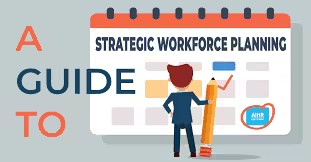Memory Nguwi caught up with Tracy Smith (USA) to explore how workforce planning can help businesses reduce workforce management risk. She is an expert on analytics (HR, diversity, supply chain, purchasing, quality, customer service, ops), a business author, and speaker. She regularly advises companies on how to apply analytics in a practical and cost-effective way.
MN: What is workforce planning?
TS: Strategic workforce planning is about identifying the biggest risks in your workforce and setting plans to address those risks before they impact your business substantially.
MN: Is workforce planning separate from business planning?
TS: Workforce planning is a component of business planning and it should therefore be integrated into the same planning process. That said, it is often difficult to create the integrated process until many workforce planning lessons have been learned. Realistically, most companies begin with smaller components of workforce planning and work their way up into a more complex and integrated process.
MN: Why should a business worry about workforce planning?
TS: With the speed of technological change, the needs of the workforce are changing much faster than they did 10 years ago. Without a process to actively identify changes that can impact the business, a company risks not having the key workforce it needs to remain competitive.
Related: How Does Supply And Demand Affect Workforce Planning
MN: How different is workforce planning from succession planning?
TS: These are two different planning processes. In most companies, succession planning is only completed for the management levels to ensure continuity in the near term. Workforce planning identifies and plans for the key roles within a company regardless of where it sits on the org chart.
MN: One of the biggest challenges in workforce planning from my experience is being able to accurately forecast future business performance and factor that into workforce planning? What risks arise if we forecast wrongly how the business will perform? How can we enhance business forecasting for purposes of workforce planning?
TS: Forecasting business performance is very challenging as it can only be as accurate as the information on which it was based. Since workforce planning is a component of business planning, it is important to revisit the forecast and its implications regularly. The more uncertain your business forecast is, the more often you will want to revisit both the forecast and its implications. Don’t be afraid to make adjustments since business conditions and knowledge of one’s own industry change over time.
Related: Hiring Freeze - What You Need to Know
MN: What are the key steps in workforce planning?
TS: Here is the framework for workforce planning.
MN: How do you assess the importance of a role when doing workforce planning?
TS: There are several methods available, but all will touch on several important points.
- What are the skills you need to protect today?
- What are the skills you don’t have today that you need for tomorrow?
- Which roles, if they vanished today, would severely impact the ability of your business to function?
MN: How do you factor in the quality of labour in workforce planning? You may have the right quantities per role but not the right quality?
TS: It’s more that you may have the right quantity of headcount but the wrong skill sets. That’s why you must assess two types of “gaps” in SWP: headcount and skill set.

